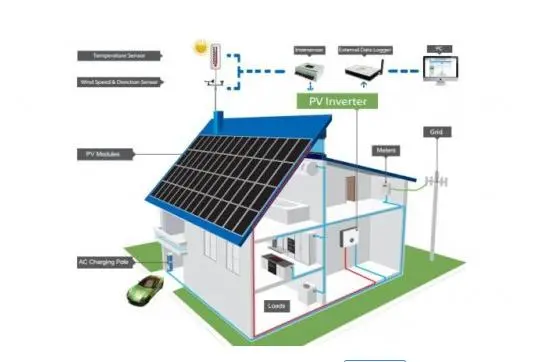 |
Welcome To Evlithium Best Store For Lithium Iron Phosphate (LiFePO4) Battery |
 |

In the realm of solar technology, hybrid inverters are a groundbreaking innovation, merging the advantages of traditional solar inverters with the adaptability of battery inverters. These devices unify functionalities, offering homeowners a versatile solution, especially for those eyeing future solar power upgrades, including integrated battery storage systems.
A hybrid solar inverter seamlessly integrates the roles of a solar inverter and a battery inverter, intelligently managing power from solar panels, solar batteries, and the utility grid concurrently. Unlike traditional solar grid-tie inverters converting DC to AC electricity for household use, a battery inverter is responsible for converting stored DC electricity from solar batteries into usable AC electricity.
By amalgamating these functions into a singular unit, the hybrid grid-tie inverter optimizes the functionality of a conventional solar inverter. Its unique capability to draw power from the grid to charge battery storage during low solar output further solidifies its efficiency.
Bi-Directional Power Conversion: A standout feature is its ability to both convert DC electricity from solar panels to AC for home use and convert surplus AC electricity from the grid to DC for battery storage.
Power Regulation: Managing fluctuations in solar power, it ensures consistent operation within system parameters.
Power Monitoring: Equipped with monitoring software, these inverters facilitate real-time assessment of the photovoltaic system to identify and rectify faults promptly.
Power Maximization: Employing Maximum Power Point Trackers (MPPT), these inverters optimize power output by aligning solar power generation with battery voltage for efficient charge and usage under varying conditions.
What sets the hybrid inverter apart is its seamless integration between a home's solar power system and the electricity grid, allowing surplus energy to charge the battery system and then transfer excess to the grid. Unlike other central inverters, its bi-directional power transfer capability enables a more versatile energy management system.
Power Resiliency: Ensures continuous power access during blackouts by seamlessly switching between on-grid and off-grid capabilities.
Retrofitting Battery Storage: Allows for the addition of battery storage at any time, minimizing initial installation costs.
Simplified Energy Monitoring: Provides comprehensive system data through a unified interface, simplifying monitoring.
Existing System Upgrades: Can complicate upgrades to an existing solar power system, requiring a complete overhaul.
Initial Equipment Expenses: May incur higher initial costs compared to traditional inverters.
Limited Future Flexibility: Compatibility issues may arise with evolving battery technology, restricting future upgrade options.
Despite the initial investment, a hybrid inverter proves valuable, particularly when integrating solar battery storage from the outset or in the near future. It effectively addresses intermittency issues and offers enhanced energy storage capabilities, ideal for backup power during outages or peak demand.
While most solar systems remain connected to the grid, a hybrid inverter supports multiple tasks, enabling complete disconnection by accommodating solar panel operations, battery storage, and alternative power sources.
A hybrid inverter, despite its higher upfront costs, optimizes PV system operations, reducing grid reliance, and enhancing sustainability. It offers advanced monitoring and boosts power generation, marking a significant step toward a more efficient solar power system.
Edit by editor
All Rights reserved © 2025 Evlithium Limited